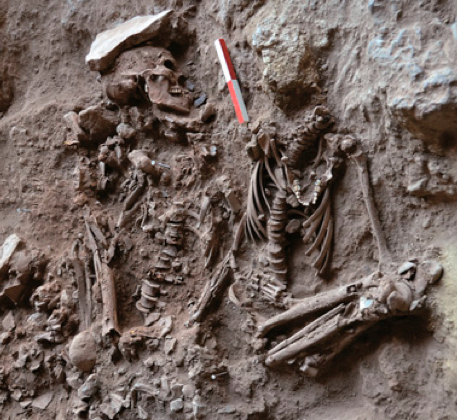New Scientist
Image: E. Gernstein
Flowers have gone hand in hand with death for at least 13,000 years. The remains of colourful and fragrant blooms have been found in Stone Age Natufian graves, providing the latest evidence that the eastern Mediterranean culture marked a turning point in the birth of the modern society.
“Everything changed with the Natufians,” says Daniel Nadel at the University of Haifa in Israel. Just before the agricultural revolution, they built the first basic settlements, invented technologies to process grain and gave the world cemeteries.
“Before, you find a few isolated burials,” says Nadel. “But some Natufian sites have more than 100 skeletons in one confined area. That’s a huge change.”
In Raqefet cave in the Haifa district, Nadel and his colleagues have found four graves, between 13,700 and 11,700 years old, that were lined with flowers. They identified the imprints of sages and figworts in the mud around the bodies – the earliest strong evidence of plants being associated with funeral ceremonies.
The plants would have been laid out beneath and under the bodies, in a layer that was thick enough to prevent other objects in the grave from leaving their own imprints in the mud.
“The social aspects of death were changing,” says Nadel. “Perhaps they were not just thinking about trying to make the grave comfortable, but also thinking of the effect the flowers would have on those attending the funeral.” Read more on newscientist.com…








